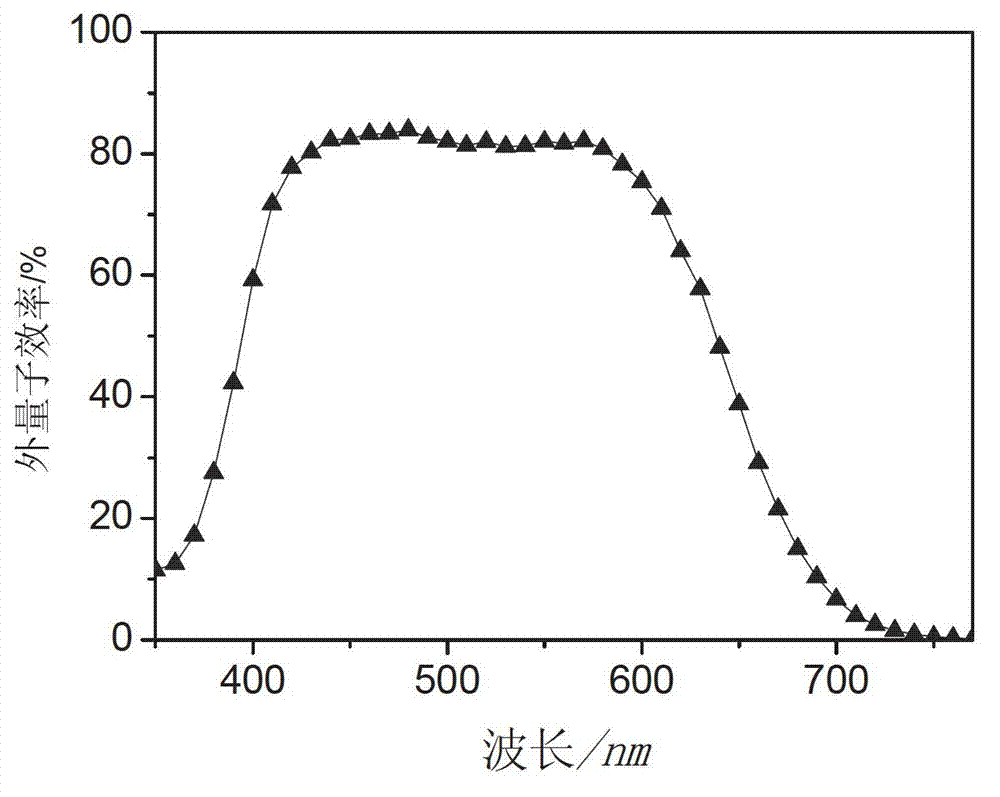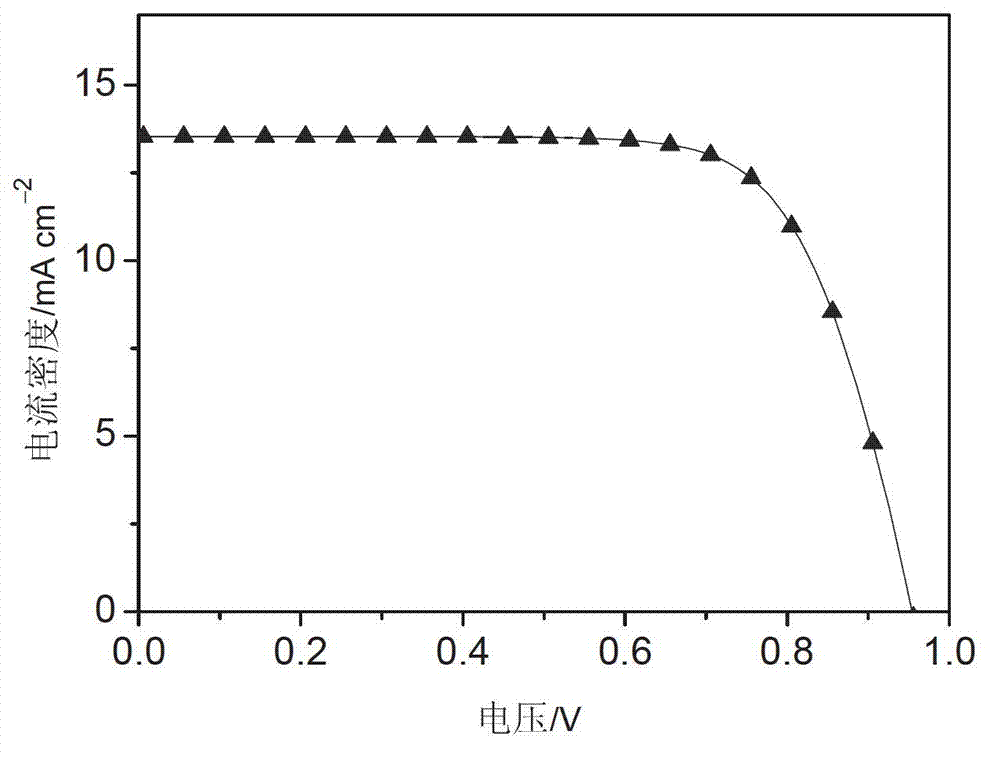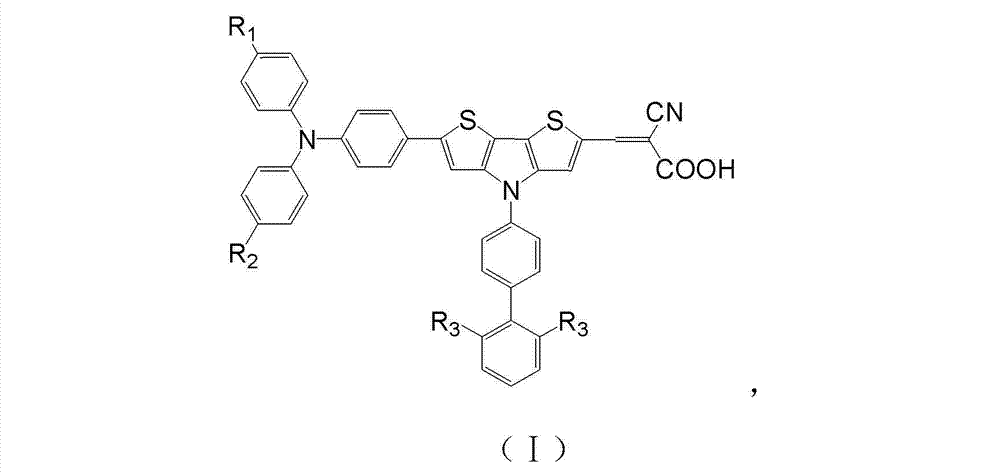Organic dye and application thereof in dye-sensitized solar cell
A technology for organic dyes and solar cells, applied to organic dyes and application fields in dye-sensitized solar cells, can solve the problem of high cost and achieve the effects of low cost, simple synthesis process and good light absorption capacity
- Summary
- Abstract
- Description
- Claims
- Application Information
AI Technical Summary
Problems solved by technology
Method used
Image
Examples
Embodiment 1
[0017] Embodiment 1: the organic dye synthesis of chemical structural formula (II)
[0018]
[0019] Synthesis of Intermediate 2:
[0020] Add 10 grams of raw material 1, 29 grams of potassium carbonate and 200 milliliters of acetone into a 500 milliliter three-necked reaction flask, vacuumize the oil pump, add 32 grams of n-bromo-octane under the protection of argon to obtain a mixture, and heat the above mixture to reflux for 12 Cool to room temperature after 1 hour, add 200 milliliters of water to terminate the reaction, the organic phase that obtains after the reaction solution is extracted with chloroform is dried with sodium sulfate, filters, and the crude product that obtains after decompression spins off the filtrate uses sherwood oil as eluent and uses silica gel chromatography Column chromatography obtains 18.7 grams of intermediate 2, and the reaction yield is 96%;
[0021] NMR characterization data of Intermediate 2:
[0022] 1 H NMR (600 MHz, DMSO-d 6 ) δ: ...
Embodiment 2
[0054] Example 2: Dye-sensitized solar cells prepared from organic dyes of chemical structural formula (II)
[0055] TiO 2 The structural double-layer membrane electrode was soaked in a mixed solution of acetonitrile and tert-butanol (volume ratio 1:1) containing 150 micromoles per liter of dye (II) for 12 hours, and then the glass electrode spin-coated with nano-platinum was passed through a 35 micron thick hot melt ring with TiO 2 The structural double-layer film electrode is heated and sealed, and finally the electrolyte is injected into the gap between the two electrodes, which constitutes a dye-sensitized solar cell. figure 1 is a graph of photoelectric conversion efficiency and wavelength of the dye-sensitized solar cell prepared in Example 2 of the present invention; figure 2 It is a graph showing the relationship between current and voltage of the dye-sensitized solar cell prepared in Example 2 of the present invention. The performance structure of the dye-sensitiz...
PUM
 Login to View More
Login to View More Abstract
Description
Claims
Application Information
 Login to View More
Login to View More - R&D
- Intellectual Property
- Life Sciences
- Materials
- Tech Scout
- Unparalleled Data Quality
- Higher Quality Content
- 60% Fewer Hallucinations
Browse by: Latest US Patents, China's latest patents, Technical Efficacy Thesaurus, Application Domain, Technology Topic, Popular Technical Reports.
© 2025 PatSnap. All rights reserved.Legal|Privacy policy|Modern Slavery Act Transparency Statement|Sitemap|About US| Contact US: help@patsnap.com



